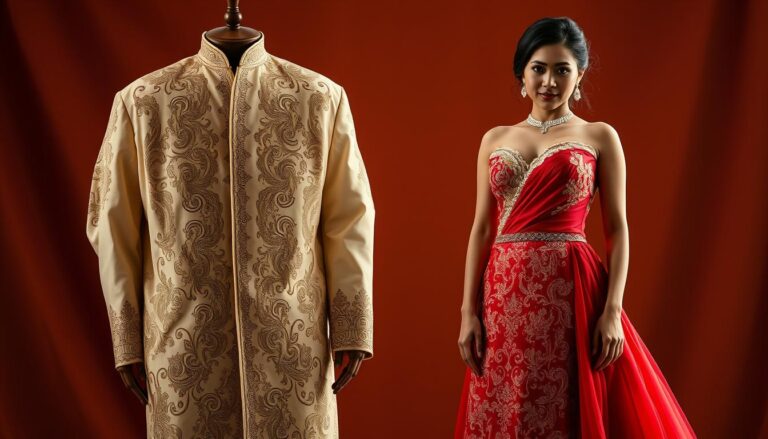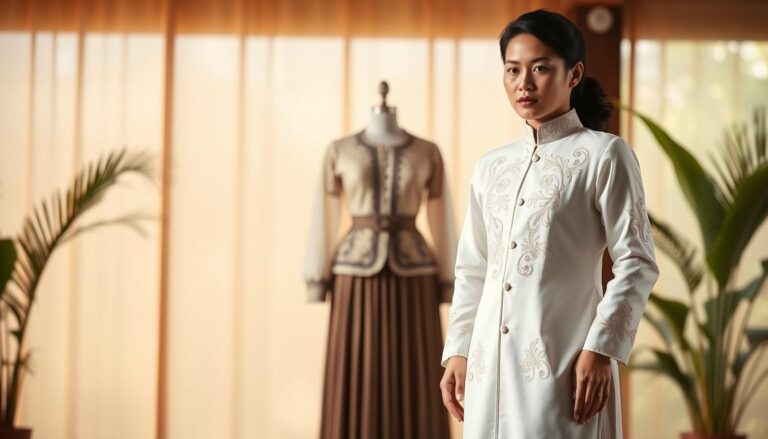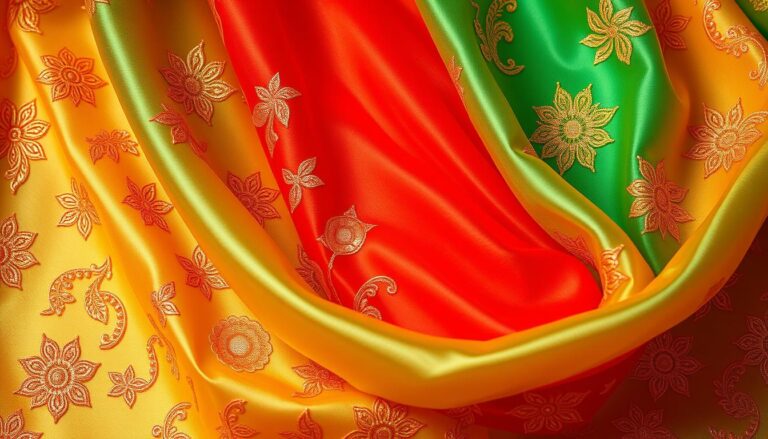Caring for Your Barong: Maintenance & Cleaning Tips
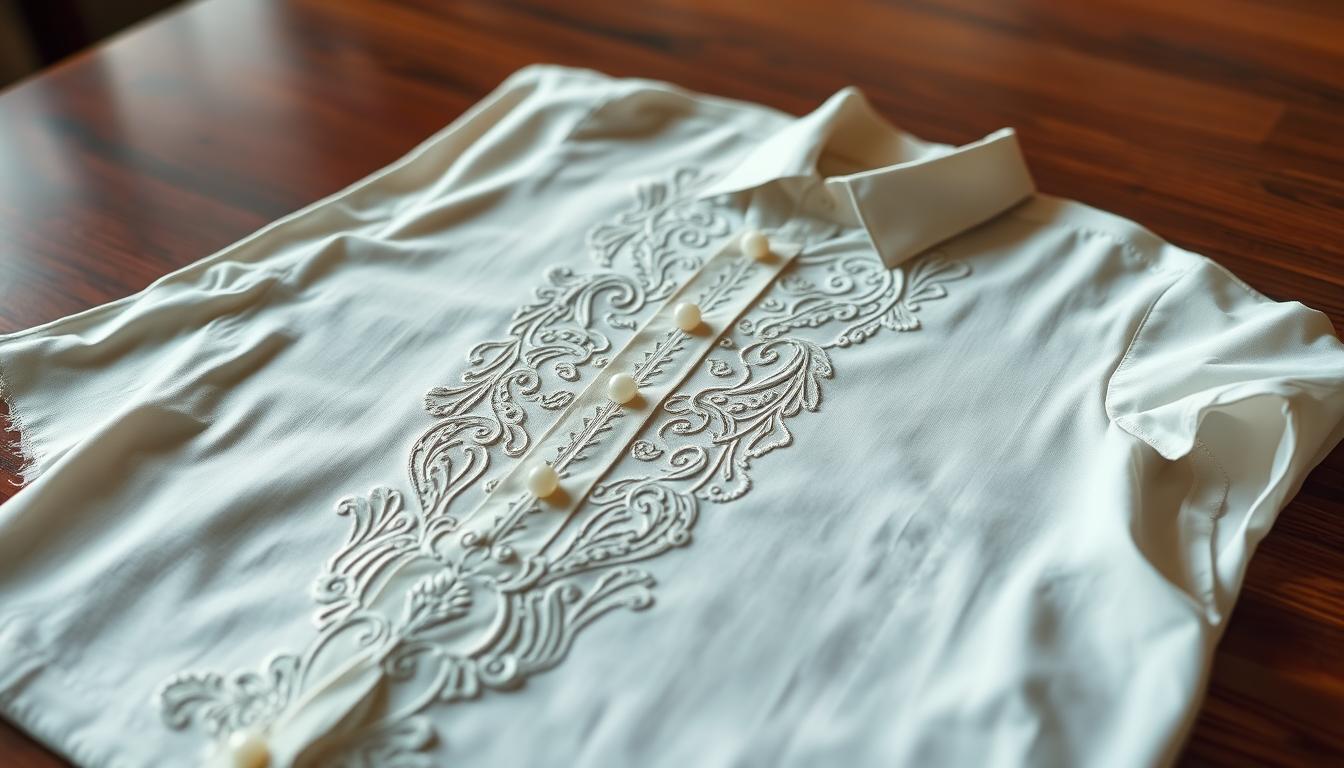
The Barong Tagalog is more than formal attire—it’s a cherished symbol of Filipino heritage. Worn at weddings, graduations, and cultural events, this lightweight garment features delicate fabrics like jusi or piña, often adorned with intricate embroidery. Proper care ensures it remains pristine for generations.
Handling this cultural treasure requires attention to detail. Rough treatment or harsh cleaning methods can damage its fragile materials. Instead, gentle techniques preserve both the fabric’s elegance and the craftsmanship’s authenticity.
This guide covers practical steps to maintain your garment, from daily upkeep to seasonal storage. You’ll learn why machine washing is risky, how to air-dry safely, and which storage solutions prevent yellowing. We’ll also share tips for addressing stains without harming embroidery.
Key Takeaways
- The Barong Tagalog represents Filipino cultural pride and requires specialized maintenance.
- Delicate fabrics like piña demand hand washing and air-drying to avoid damage.
- Proper storage in breathable garment bags prevents moisture and pest issues.
- Ironing should be done inside-out to protect decorative elements.
- Combining traditional methods with modern tools ensures long-term preservation.
Understanding Barong Fabrics and Materials
Knowing your Barong’s fabric is key to preserving its cultural and aesthetic value. Traditional designs rely on organic textiles like jusi and piña, while modern versions often blend these with synthetic options. Each material demands specific handling to avoid damage.
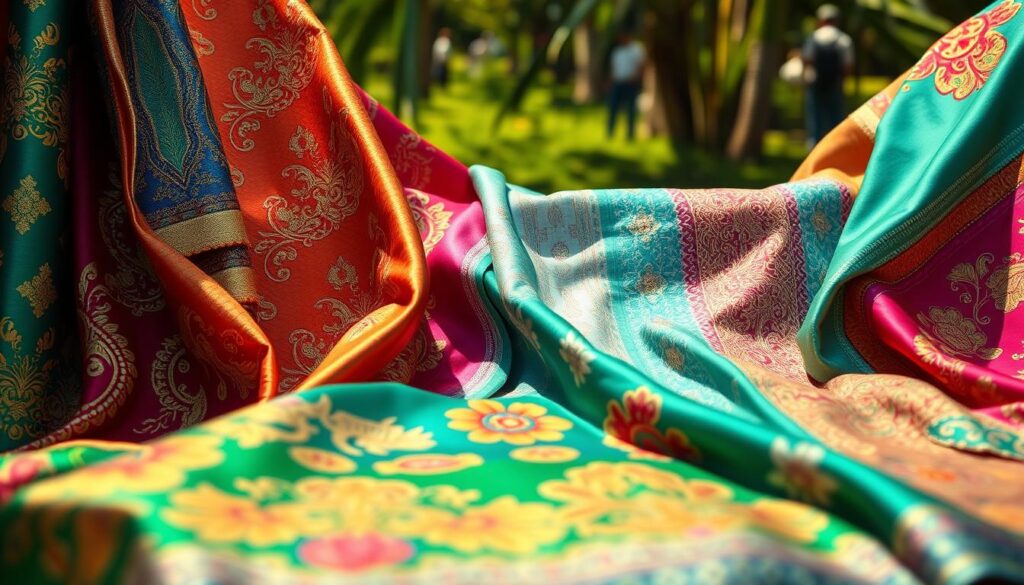
Jusi and Piña: The Heart of Tradition
Piña, woven from red Spanish pineapple leaves, has a golden sheen and delicate weave. Its sheer texture requires careful cleaning to prevent tears. Jusi, a raw silk organza, offers a smoother finish but still needs gentle care due to its natural fibers.
Both fabrics reflect centuries-old Filipino craftsmanship. Rough scrubbing or harsh detergents can break their fragile threads. Hand washing in cool water preserves their structure and intricate embroidery.
Cotton, Linen, and Polyester Considerations
Modern cotton and linen Barongs are more durable but still need attention. These breathable fabrics resist wrinkles better than traditional options. However, they may shrink if machine-dried.
Polyester blends are budget-friendly and low-maintenance. While they withstand machine washing, they lack the authenticity of natural materials. Always check care labels—mixing cleaning methods risks color fading or fabric warping.
Effective Cleaning Techniques for Barong Tagalog
Preserving the elegance of this cultural garment starts with tailored cleaning approaches. Delicate fabrics demand strategies that balance thoroughness with gentleness, especially around intricate embroidery.

Spot Cleaning and Stain Removal Methods
Act quickly when spills occur. Dab stains with a cotton ball dipped in cool water mixed with mild detergent. For stubborn spots, apply a drop of shampoo or Woolite using a soft toothbrush in circular motions.
Avoid rubbing embroidered areas. Rinse thoroughly with a damp cloth to prevent residue. Hydrogen peroxide diluted in water (1:5 ratio) works for organic stains, followed by a vinegar rinse to neutralize odors.
Hand Washing vs. Dry Cleaning: What to Choose
Hand washing remains safest for piña and jusi fabrics. Fill a basin with lukewarm water and dissolve a teaspoon of soap. Submerge the garment for 10 minutes, then gently swish without twisting.
Most dry cleaners use harsh chemicals that weaken natural fibers. If professional cleaning is unavoidable, request a gentle cycle specifically for delicate ethnic wear.
Using Mild Detergents and Soft Brushes
Harsh detergents strip natural oils from pineapple-silk blends. Opt for pH-neutral cleaners or baby shampoo. After washing, press water out by rolling the Barong in a microfiber towel—never wring.
Use a wide-tooth comb to align embroidery threads while damp. This prevents tangling and maintains the design’s crispness during air-drying.
Caring for Your Barong: Maintenance & Long-Term Care
Preserving delicate fabrics requires methods that balance immediate care with future protection. Traditional materials like piña demand consistent attention to avoid irreversible damage.
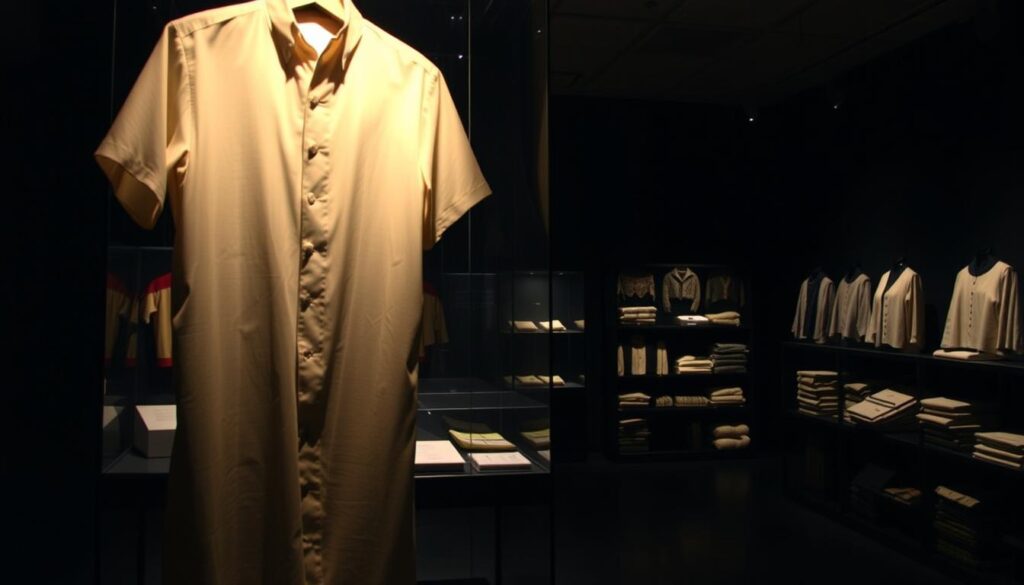
Why Machine Washing and Wringing Cause Harm
Agitation from machines tears fragile fibers and loosens embroidery threads. Wringing twists the fabric, permanently altering its shape. Both practices accelerate wear, shortening the garment’s lifespan.
After washing, gently press water out by rolling the piece in a clean towel while still damp. Lay it flat on a drying rack to air dry. This prevents stretching and keeps decorative elements intact.
Reshape collars and sleeves by hand before drying. Smooth seams with your fingers to maintain original proportions. Avoid direct sunlight, which weakens fibers over time.
- Store in breathable cotton bags to prevent mildew
- Inspect every 6 months for loose threads or discoloration
- Use padded hangers that support the garment’s shoulders
These steps ensure heirloom-quality preservation. With proper care, these garments remain vibrant and wearable for decades, honoring their cultural significance through years of use.
Proper Drying and Pressing Methods
Mastering post-wash care transforms how your garment ages. Delicate fabrics thrive when drying and pressing align with their unique needs. Follow these methods to maintain texture and prevent irreversible damage.
Air-Drying Without Direct Sunlight
Hang the piece on a wide, padded hanger immediately after washing. Avoid metal hooks—they leave rust marks and distort shoulder seams. Choose shaded outdoor areas or well-ventilated rooms to prevent UV-induced brittleness.
| Method | Risk | Recommendation |
|---|---|---|
| Line Drying | Fiber stretching | Use clips on seams, not embroidery |
| Flat Drying | Slow evaporation | Flip every 2 hours |
| Mechanical Dryers | Shrinkage | Never use |
Safe Ironing and Steaming Practices
Set irons to low heat (under 300°F) and always test hidden areas first. For stubborn wrinkles, lightly mist with water or use a handheld steamer 6 inches from the fabric.
- Iron inside-out to shield embroidery
- Place cotton cloth between iron and fabric
- Press—don’t slide—the iron
High heat melts synthetic blends and yellows natural fibers. Let the garment cool completely before storing to avoid crease imprinting.
Essential Storage Tips to Protect Your Barong
Proper storage methods ensure this cultural treasure retains its beauty between uses. Breathable materials and strategic placement prevent common threats like moisture buildup and fabric distortion.
Choosing Breathable Hangers and Storage Solutions
Opt for wooden hangers with rounded edges to support shoulder seams without leaving marks. Avoid plastic alternatives—they trap humidity and may transfer chemicals to delicate garments over time.
Store your piece in unbleached cotton bags or acid-free boxes. These materials allow air circulation while shielding against dust. For travel, use a ventilated suit cover with internal tie straps to minimize movement.
Always ensure the garment is completely dry before storage. Reshape collars and sleeves, then fasten buttons to maintain structure. Place a layer of cloth between folded sections if stacking multiple pieces.
Rotate stored items every 3 months to prevent permanent creases. Consider adding cedar blocks or lavender sachets to deter pests naturally. Never use mothballs—their fumes can yellow piña fibers.
Keep your storage area cool (60-70°F) with moderate humidity. Install a small hygrometer to monitor conditions. For long-term preservation, air out the storage space weekly to maintain freshness.
Conclusion
Preserving a Barong Tagalog honors Filipino craftsmanship while protecting its delicate beauty. Proper care combines traditional wisdom with practical steps, ensuring these garments remain vibrant for years.
Gentle hand washing and spot cleaning with mild detergents prevent fabric damage. Always test soap solutions on hidden areas first. For stains, blot—never rub—to safeguard intricate embroidery.
Understanding fabrics like jusi or pineapple silk guides your approach. These materials demand air-drying and low-heat pressing to maintain their shape. Avoid machine washing, which strains fragile fibers.
Store in breathable cotton bags to prevent mildew. Reshape collars before hanging, and use padded hangers. With consistent attention, your garment stays ready for celebrations while upholding cultural legacy.
Adopt these methods to keep your Barong Tagalog timeless. Each careful choice extends its life, letting you wear heritage with pride at every special occasion.

